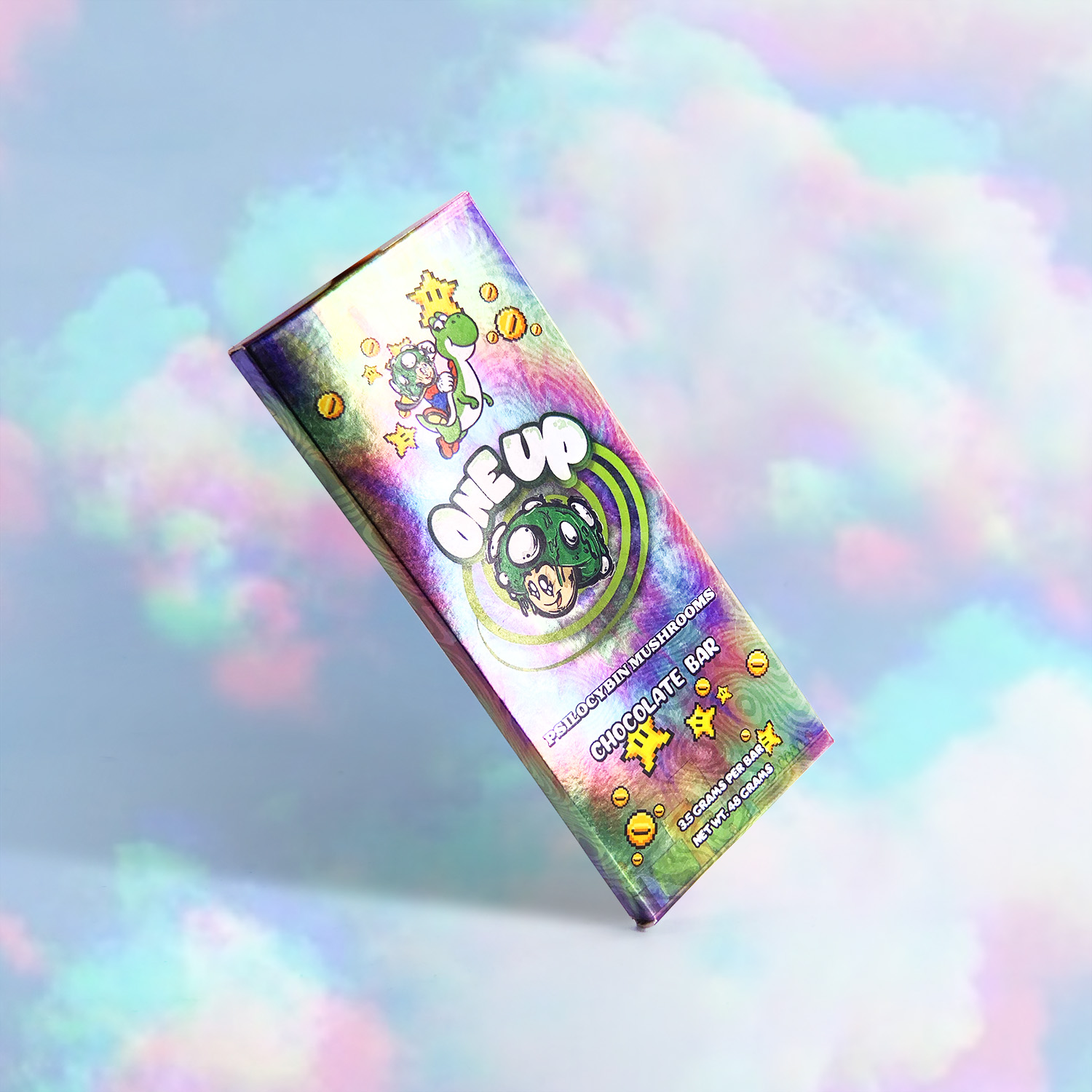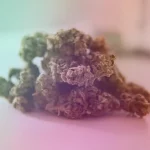“Magic mushroom” is an all-encompassing term for any species of fungi with psychoactive or hallucinogenic effects. They’re one of the most common psychoactive substances on earth.
There are nearly 400 different species of magic mushrooms — which can be found on every continent on earth except Antarctica.
Magic mushrooms contain two psychoactive alkaloids — psilocybin and psilocin. These alkaloids have the ability to interact with the serotonin receptors (5HT2A) — producing changes in the way we perceive sensory information (sound, vision, and touch).
Aside from changing sensory perception, magic mushrooms have a strong spiritual component. They’re used as a tool for self-discovery and spiritual experience. They’ve been used as a sacrament in virtually every region of the world in which they can be found — including South America, North America, Europe, Asia, and Australasia. Click here for more info psychedelic mushroom chocolate bars for sale near me.
Medical research on magic mushrooms has seen a lot of breakthroughs in the last three years too. Magic mushrooms have been shown to offer substantial benefits in treating addiction, depression, anxiety, cluster headaches, and much more.
Magic Mushrooms: Specs & Technical Details
| Active Ingredients | Psilocybin & Psilocin |
| Level of Risk | Low |
| Street Names | Magic Mushrooms, Mushies, Shrooms |
| Most Common Side Effects | Anxiety, Digestive Upset |
| Duration of Effects | 4 – 6 Hours |
| Legality | Illegal or Decriminalized |
How Do Magic Mushrooms Work?
Magic mushrooms work by mimicking the effects of serotonin — one of the brain’s most important neurotransmitters. Serotonin is involved with the regulation of mood, memories, focus, creativity, sexual arousal, and much more.
The active ingredients in magic mushrooms — psilocybin and psilocin — share a similar structure to serotonin. This allows them to interact with specific serotonin receptors located in various regions of the brain.
Most of the effects of magic mushrooms come from psilocin rather than psilocybin. Psilocybin needs to be metabolized (converted) by the liver into the active psilocin before it can produce any effects.
Psilocin & The 5-HT1A Receptors
Activating this receptor doesn’t have nearly as strong of an effect on our perception, but it does interact with other parts of the body — such as heart rate and blood pressure.
This receptor is thought to be the primary mechanism involved with the anti-anxiety benefits of magic mushrooms.
Psilocin & The 5-HT2A Receptors
Most psychedelics work through the same mechanism — activation of the 5HT2A and 5-HT2C receptors.
The 5HT2A receptor is a subgroup of serotonin receptors (there are several) ranging from 5HT1 through to 5HT7 — each with a few subtypes referred to as type A, B, or C.
Psilocin interacts with several of these receptors, producing changes in mood, autonomic processes like heart rate, pupil dilation, and more. However, it’s this 5-HT2A receptor specifically that accounts for the majority of the psychoactive effects from the compound.
Activating these receptors results in changes in visual and auditory perception, mental stimulation, mood, memory, and more.
Psilocin & 5-HT2C Receptors
This is the second target for most psychedelic compounds — including magic mushrooms, LSD, DMT, and mescaline.
These receptors are responsible for inhibiting dopamine and norepinephrine release in certain parts of the brain. This effect is thought to contribute to the anti-anxiety, mood-balancing, and appetite suppressing effects of magic mushrooms.
Activation of these receptors causes a change in the visual cortex of the brain.
What Are The Health Benefits of Magic Mushrooms?
Magic mushrooms offer much more than a psychedelic afternoon. They offer legitimate health benefits — backed up through large-scale clinical trials and decades’ worth of research.
Research began back in the 1960s. Right away, research started showing improvements in psychiatric conditions such as schizophrenia, depression, addiction, and existential anxiety.
Today, research on magic mushrooms and other psychedelics is at its prime — there are dozens of studies published on the therapeutic applications every year.
Benefits of magic mushrooms that have been confirmed through medical research:
Alleviates or prevents cluster headaches & migraines
Reduces cravings & addiction to drugs, alcohol, & cigarettes
Supports creative thought & focus (microdoses)
Alleviate existential dread & anxiety
Improve symptoms of PTSD, generalized anxiety, & social anxiety disorders
Improves chronic depression & other mood disorders
Alleviates symptoms of obsessive-compulsive disorder (OCD)
Outside of these benefits, there are a lot of anecdotal reports on the use of magic mushrooms for other conditions and applications as well.
Benefits that have not yet been confirmed through research:
Alleviates symptoms of ADD & ADHD
Alleviates migraine headaches
Reduces symptoms associated with premenstrual syndrome
May relieve shingles pain
- Magic Mushrooms for Cluster Headaches
A cluster headache is similar to a migraine but differentiates in its frequency and duration. Cluster headaches come and go several times throughout the day; each experience lasting 15 minutes to 2 hours at a time. Migraines tend to last much longer and only come on once per day or less. For more click here trippy flip chocolate bar.
Cluster headaches can cause significant amounts of pain. One of the common names for this condition is “suicide headaches” because the pain is so great it can leave sufferers contemplating suicide at times.
Research on the effects of psilocybin on cluster headaches is still in its infancy — but the results published so far are very promising.
The team at Clusterbusters.org published the results of a survey they sent out to their readers in 2015. This project was formed after the founders discovered evidence that compounds like LSD had the potential to treat cluster headaches — a condition with a notoriously poor prognosis for treatment.
The results of this study were based on the self-reported data of 496 cluster-headaches sufferers (diagnosis confirmed by neurologist).
The study reported that psilocybin from magic mushrooms was the most effective for preventing cluster headache attacks overall (33.7%).
This was followed by the pharmaceutical medication verapamil (16.6%), LSA (16.1%), steroids (15.1%), LSD (6.5%), and vitamins (3.5%).
- Magic Mushrooms for Depression
One of the most promising therapeutic benefits of magic mushrooms is in the treatment of chronic depression.
A study published by the Beckley Foundation involving 12 patients with severe treatment-resistant depression gave patients either 10 or 25 mg of pure psilocybin to explore the impact on symptoms. The study noted a significant reduction in depression scores following the study, which remained intact six months later during a follow-up examination.
There are two methods of using magic mushrooms for the purposes of managing depression:
Microdoses taken over long periods of time
One or two sessions of a psychoactive dose
One of the ways psilocybin is thought to work for depression comes down to its effects on the 5HT serotonin receptors. Psilocybin has been shown to interact with the 5-HT1A, 5-HT1D, 5-HT2A, and 5-HT2C receptors — several of which are the targets for common antidepressant medications (SSRIs).
For microdosing, the idea is that steady, consistent doses of psilocybin have a downregulating effect on the serotonin receptors over time. Studies have shown that increased binding activity at the serotonin receptors (primarily 5-HT2A) plays a role in depression.
For microdosing (psychedelic experience), a similar effect on the serotonin receptors is taking place here as well, but there’s another layer to the benefits.
Psychedelics like psilocybin, LSD, LSA, DMT, and mescaline are all thought to “reset” a system in the brain called the default mode network (DMN) — which we’ll explore in more detail below.
The DMN is involved with our image of self and self-worth — and thought to play a major role in the development of depression. Brain imaging studies have shown psilocybin is able to “reset” and “restructure” the DMN in a way that makes the mind less susceptible to depression and anxiety.
- Magic Mushrooms for Anxiety
Studies involving the use of psilocybin-containing mushrooms have been ongoing since the 1960s. There have also been thousands of anecdotal reports of users eliminating or dramatically reducing their anxiety symptoms with the help of psychoactive mushrooms over the past 60 years.
More recently, there have been a couple of high-profile clinical studies on the use of magic mushrooms (and related indoleamine compounds) for the treatment of anxiety disorders.
In 2011, a study explored the effects of psilocybin on terminally ill cancer patients diagnosed with acute stress disorder, generalized anxiety disorder, or adjustment disorder with anxiety (as per the DSM-IV protocol).
Each patient had two sessions — one with 0.2 mg/kg psilocybin, the other with a placebo (niacin) — each session was several months apart.
This study found that the psilocybin dose resulted in a significant reduction in anxiety scores in the majority of patients — which were sustained at the 6-month follow-up period.
Another study (2016) compared the impact of microdosing magic mushrooms versus psychoactive dosing on cancer patients diagnosed with both depression and anxiety. This study noted that psychoactive doses had a much greater improvement in depression and anxiety scores than the microdose group.
The only problem with this study is that researchers failed to test the long-term impact of microdosing. Most experts agree, the benefits of microdosing stem from long-term, ongoing use rather than a one-off treatment.
Related: The Role of Magic Mushrooms In Palliative Care (Existential Anxiety)
- Magic Mushrooms For Addiction
Most of the research on the use of psychedelics for treating addiction revolves around LSD (older research focus) or ayahuasca (newer research focus). Magic mushrooms are often grouped under these studies because of their ability to interact with the same receptors — the 5HT2A serotonin receptors.
A study published in 2015 explored the impact of psilocybin in the treatment of alcohol addiction. This study involved two sessions involving doses of either 0.3 or 0.4 mg/kg of pure psilocybin (equivalent to around 4 or 6 grams of magic mushrooms).
Following the treatment, researchers reported a dramatic down-tick in alcohol consumption and cravings among the study participants that were maintained at the conclusion of the follow-up period 36 weeks later.
Another study looked at the impact of psilocybin on another common addiction — tobacco. This study gave patients a dose of either 20 or 30 mg of pure psilocybin per 70 kg of body weight (equivalent to around 3.5 – 5 grams of dried mushrooms).
At the conclusion of this study, researchers reported an incredible 80% of patients were able to quit smoking by the end of the six-month study period. To put this into perspective, the standard interventions involving pharmaceutical medications have an average quit-rat of just 35%.
- Magic Mushrooms Microdosing For Focus, Concentration, & Creativity
Very often people seek microdoses of magic mushrooms for the purpose of improving focus and concentration, creativity, and the ability to solve difficult problems.
This practice became famous after it came to light that many of the successful CEOs and executives working for tech companies in Silicon Valley were using microdosing to be more efficient with their work.
There has yet to be any official studies exploring this effect, but a company called MindMed is currently recruiting for a phase II clinical trial to explore a similar compound — LSD — to assess its effects on focus and concentration.
A man named Dr. James Fadiman has been collecting informal data on this effect for the past couple of years, which he recently published in a paperback in 2019. His study aimed to create a protocol for microdosing magic mushrooms and LSD to eliminate some of the variables with user reporting. He then asked users to submit their anecdotal reports after following his protocol.
Dr. James Fadiman’s magic mushroom microdosing protocol:
Dose: 0.4 grams psilocybin mushrooms
Dosing Schedule: dose on day one, followed by no dose on days two and three, then repeat for one month
In his published report, Dr. Fadiman found “participant reports suggested that spaced but repeated microdoses were followed by improvements in negative moods, especially depression, and increases in positive moods. Increased energy, improved work effectiveness, and improved health habits were observed in clinical and non-clinical populations.”
He also found that smaller sample sizes reported improvements in other symptoms, including migraine headaches, premenstrual syndrome, traumatic brain injury, and shingles pain.
- Psilocin & The Default Mode Network
The default mode network (DMN) is a series of interconnected regions of the brain associated with introspective functions such as internal thought, self-reflection, imagination, memory, and self-criticism. It’s essentially the scientific explanation for what we could call the “ego”.
When we’re sitting idle, the mind will inevitably start to wander — this is the work of the default mode network.
Overactivity of the default mode network is thought to be one of the main contributors to conditions like depression, obsessive-compulsive disorder (OCD), and anxiety. Overactivation of this network can lead to being overly critical of self, excessive, intrusive thoughts, and rigidity in thought processes and opinions. It can lead people to overthink problems or be overly critical of themselves.
Psilocybin and other psychedelics have been shown to reduce the activity of the DMN — while simultaneously increasing the activity of other brain functions. Ruminations and overcritical thinking tend to diminish or disappear. Brain imaging studies have shown this effect produces similar brain patterns experienced during deep states of meditation.
After the trip is complete, the DMN appears to behave more cohesively — which could explain by psychedelics like magic mushrooms are so useful for breaking old habits and addictions and alleviating anxiety and depression.
A recent study explored the brain activity before and after patients took a dose of psilocybin suggested it was able to reset the DMN. This causes the whole network to reconsolidate in a way that’s less rigid.
The psychological flexibility of the DMN has been suggested to be one of the primary mechanisms psychedelics use to reduce psychological conditions such as depression and anxiety.



